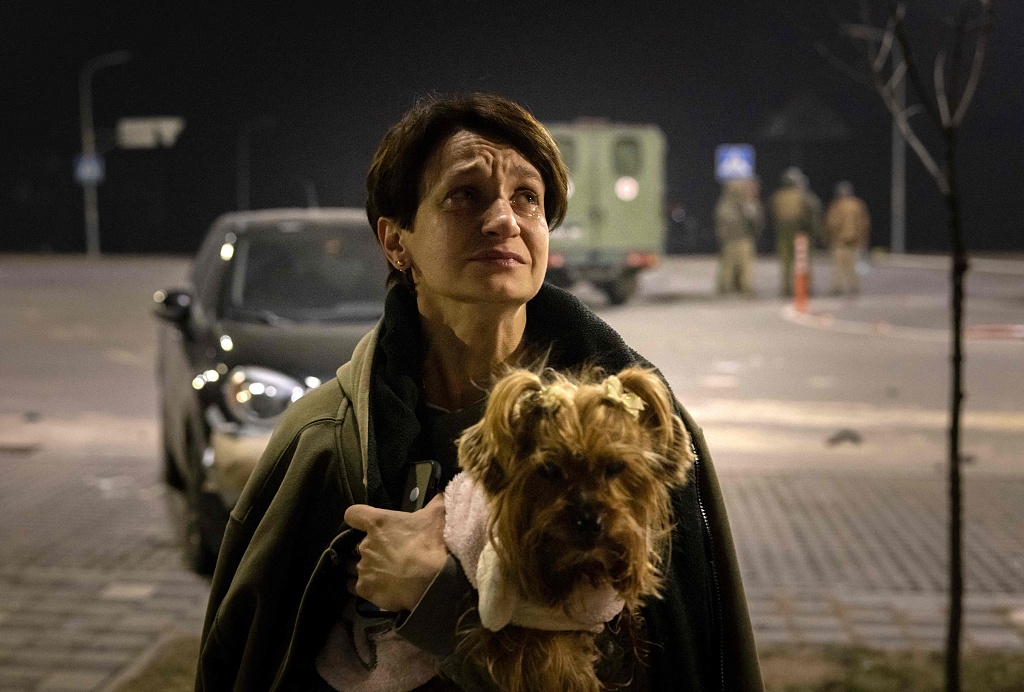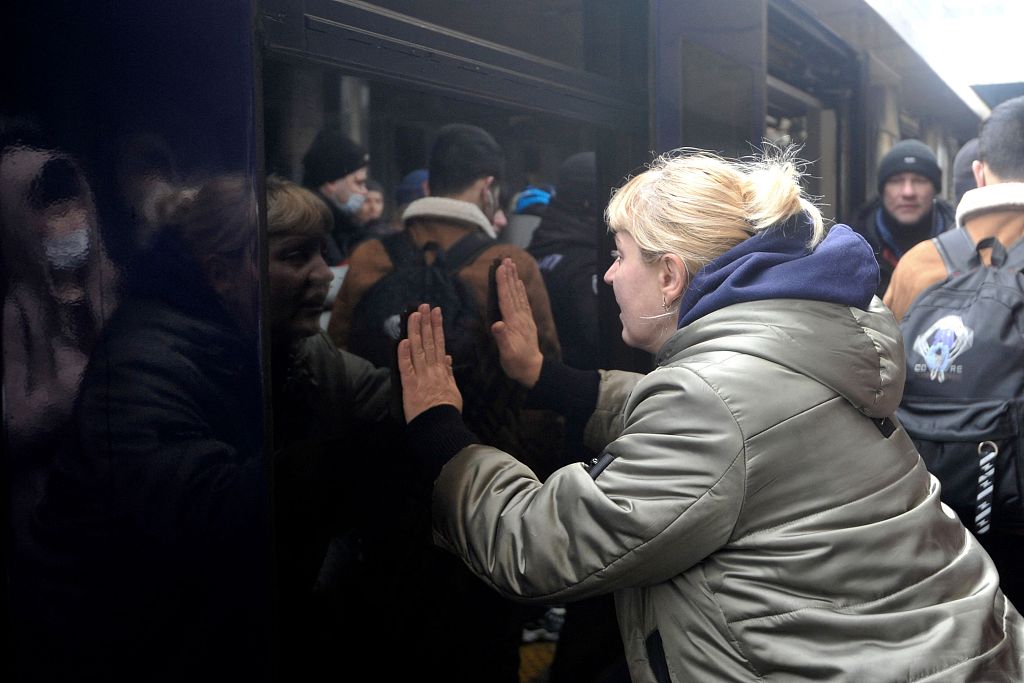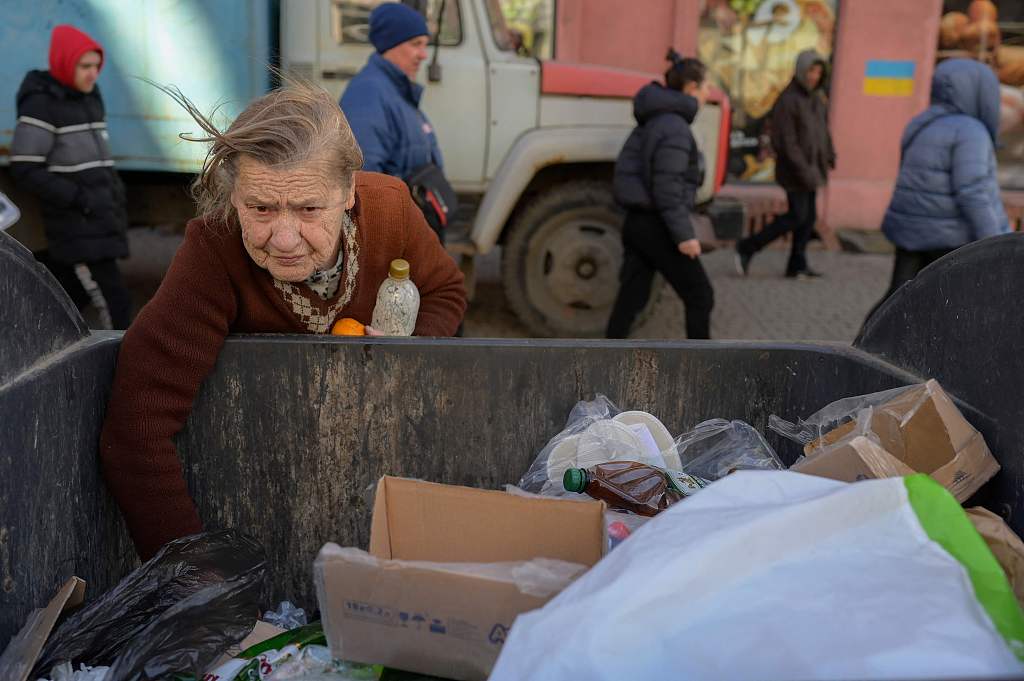Editor's note: In observance of World Refugee Day, we present a three-part news story series that sheds light on the experiences and challenges faced by refugees around the globe. Each installment focuses on a distinct region grappling with its own unique refugee crisis. This part of the series examines the protracted conflict between Ukraine and Russia, focusing on the dire situation of refugees caught in the crossfire. We provide a comprehensive account of the impact on displaced populations, the struggles they endure, and the international response aimed at mitigating their suffering.
This year, World Refugee Day – June 20 – falls almost one and a half years since the Ukraine crisis, which is currently the largest human displacement crisis in the world and the fastest outflow of refugees since the end of World War II.
According to the United Nations High Commissioner for Refugees (UNHCR), approximately one-third of Ukrainians have been forced to flee their homes, and around 5.5 million are currently displaced within the country, while some 6.3 million are displaced as refugees abroad.

A resident, carriyng her dog, leaves her apartment after a warehouse was hit by debris from a downed rocket in Kyiv on March 20, 2022. /CFP
A resident, carriyng her dog, leaves her apartment after a warehouse was hit by debris from a downed rocket in Kyiv on March 20, 2022. /CFP
Compared to refugees from other parts of the world, such as those from Syria and Iraq, Ukrainian refugees, with strong kinship, cultural and religious ties to other European countries, have mostly been met with care packages and rights to work and education.
Still, the forced displacement brings immense challenges to both Ukrainians and recipient countries in providing critical assistance.
Where the refugees went
Since the crisis erupted, millions of refugees from Ukraine have crossed borders into neighboring countries, and millions more have been forced to flee within the country.
'But it is not enough'
According to the UNHCR, 52,355 Ukrainian refugees have settled in Hungary since the conflict began. The lines of refugees seeking food and shelter are long gone, but they continue to make the country their temporary home until it is safe for them to return home.

A woman says goodbye as a train with evacuees is about to leave Kyiv's railway station on March 2, 2022./CFP
A woman says goodbye as a train with evacuees is about to leave Kyiv's railway station on March 2, 2022./CFP
"Many refugees used up all their savings during the first months here in Hungary. Their needs change as the conflict continues," said Andras Siewert, who runs the Migration Aid Refugee Center in Budapest.
"They first needed food and clothing. Now they need permanent housing, education and work.
The Hungarian government gives Ukrainians who have settled in the country a monthly payment of around $50 per adult and $25 per child.
"But it is not enough," said Siewert, explaining that "people can't live off what the government gives them, so they come to us for help."
Also, a survey by the Norwegian Refugee Council (NRC) reveals that seven out of ten Ukraine refugees living in Poland, Romania and Moldova say the income and support are not enough to cover basic needs.
"Refugees living in collective centers and those without regular employment income, like mothers with children, pensioners, and people with disabilities, are also facing increased financial pressure after fleeing from war," the survey said.
"Hosting governments and communities have been extremely generous, but it's clear from these findings that a heavy reliance on government and humanitarian assistance as the only form of income is not sustainable," said Carlo Gherardi, NRC's regional director for Central and Eastern Europe.
'Ukraine is where I see my future'
A survey by UNHCR in September 2022 found that 81% of Ukrainian refugees hoped to go back home eventually.

A Ukrainian woman looks for food in a garbage bin in the center of Odesa on March 9, 2022. Odessa. But the city of one million people close to the Romanian and Moldovan borders also holds a special place in the Russian imagination. /CFP
A Ukrainian woman looks for food in a garbage bin in the center of Odesa on March 9, 2022. Odessa. But the city of one million people close to the Romanian and Moldovan borders also holds a special place in the Russian imagination. /CFP
"I fled to Hungary with my step-parents, and we stayed here for a while. Then I volunteered to work with the children at the shelter, and now I'm a staff worker," Andrea Kenez, a Ukrainian refugee, told CGTN.
She plans to study at a university in Hungary but hopes to return to her home country one day, Kenez said.
That is a stark contrast to 2015, when 1.3 million migrants from the Middle East and North Africa escaped to Europe and sought asylum after years of war and terror. For refugees from these countries, return is not an option since they fear persecution.
To handle the influx, the EU invoked the Temporary Protection Directive (TPD), which grants Ukrainians rights to residency and work for up to three years. And some countries, including Romania and Poland, allowed those refugees to receive the same social and health services as their local residents.
However, one year later, after the conflict erupted, the governments in the EU found that the biggest question was how to manage the integration of people who may wish to return home as soon as possible but cannot know when that will be.
Even though they are highly educated, many Ukarine refugees are still unemployed. (In Ukraine, the average number of years of schooling was 11.3 in 2017, according to the UN.)
Language and cultural differences are the biggest barriers: nearly half of the Ukrainians that arrived in Poland last spring spoke no Polish at all. Many are now learning languages and finding that job fluency matters less, according to the Polish authorities.
"I never thought of living here in Hungary. My heart is back home in Ukraine. That is where I see my future," Kenez said.
(Graphics designer: Du Chenxin)